Abstract
The spleen has been examined as a possible site for transplantation of rat islets into diabetic mice. Marked prolongation of islet xenograft survival in the spleen can be achieved with in vitro culture (24 C) and a single injection of either rabbit antiserum to mouse lymphocytes (MALS) alone or MALS and rabbit antiserum to rat lymphocytes (RALS) into the recipients. The percentage of survival of intrasplenic xenografts at 100 days was 16%, as compared with 70% when rat islet xenografts were transplanted via the portal vein. Further improvement in pretreatment regimens will be needed before the spleen can be used as an effective site for possible future islet allograft or xenograft transplants in man.
Full text
PDF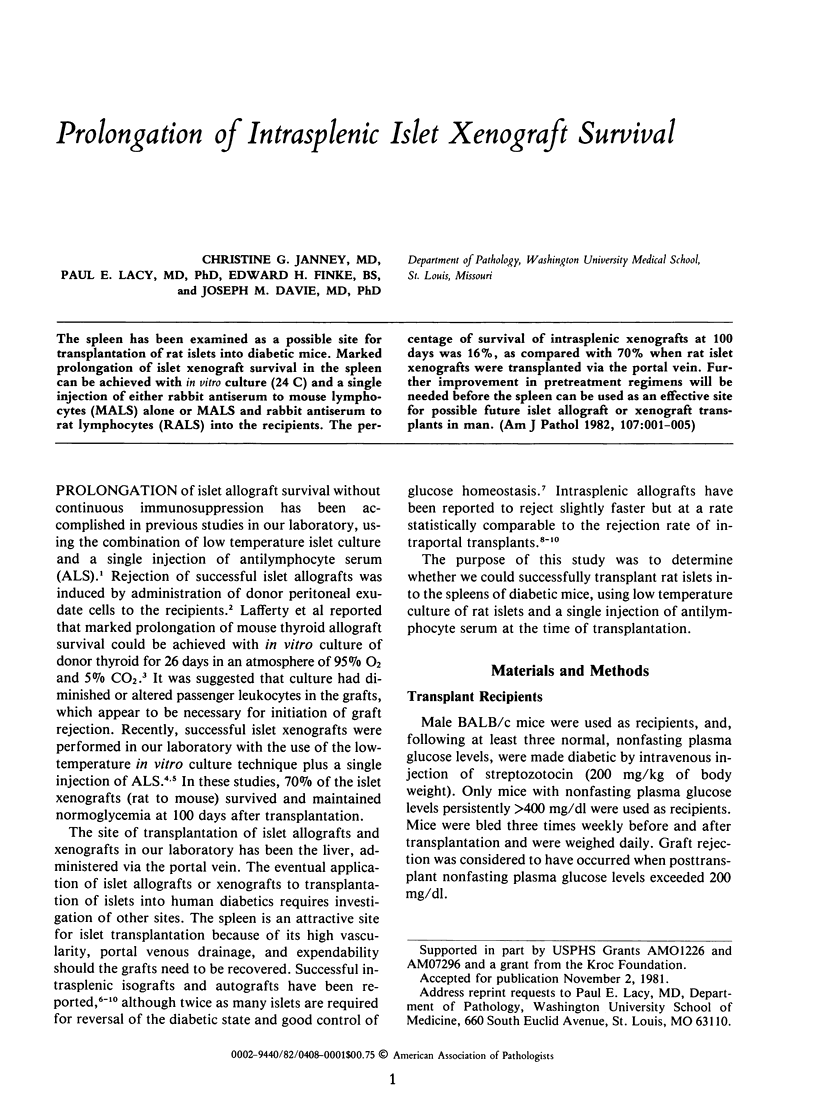
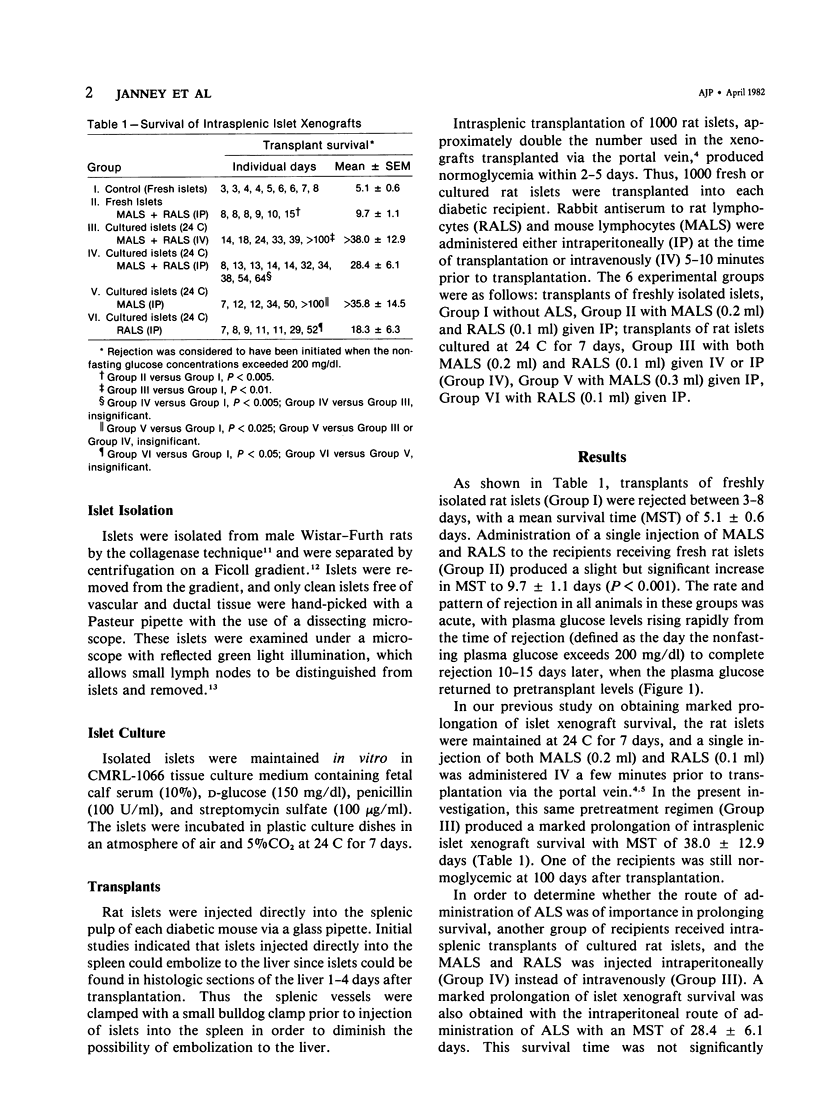
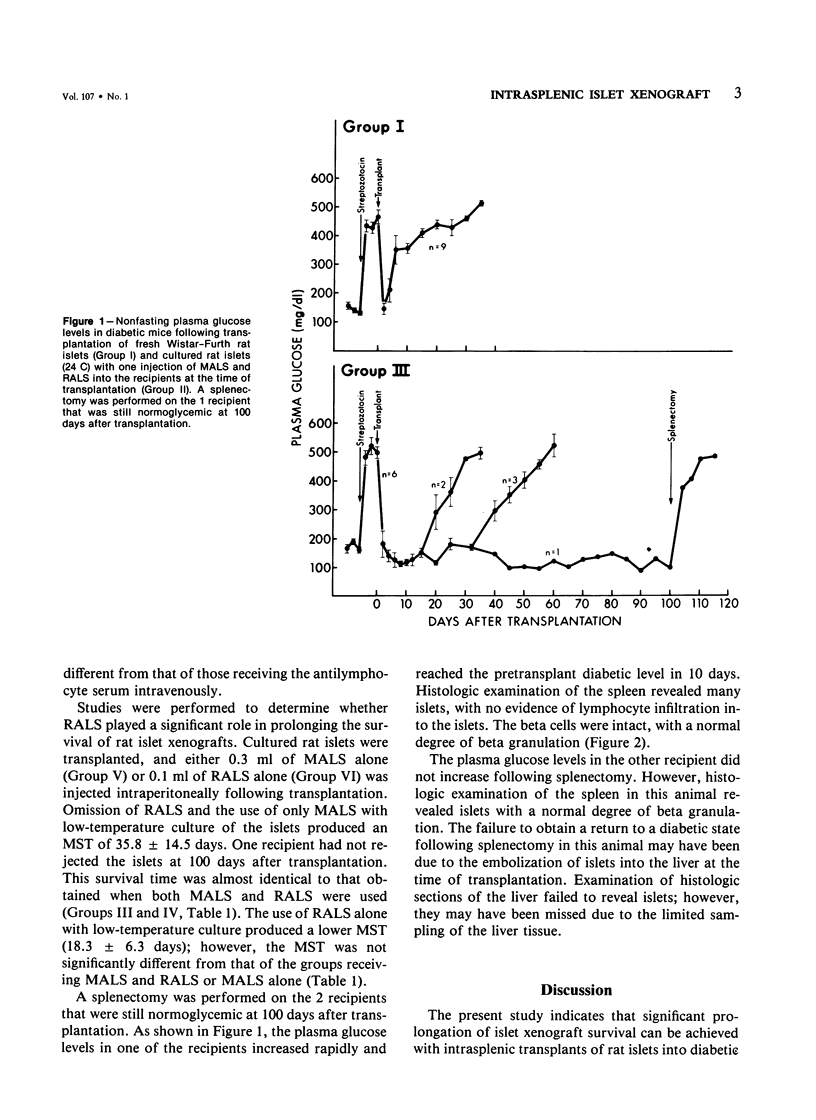
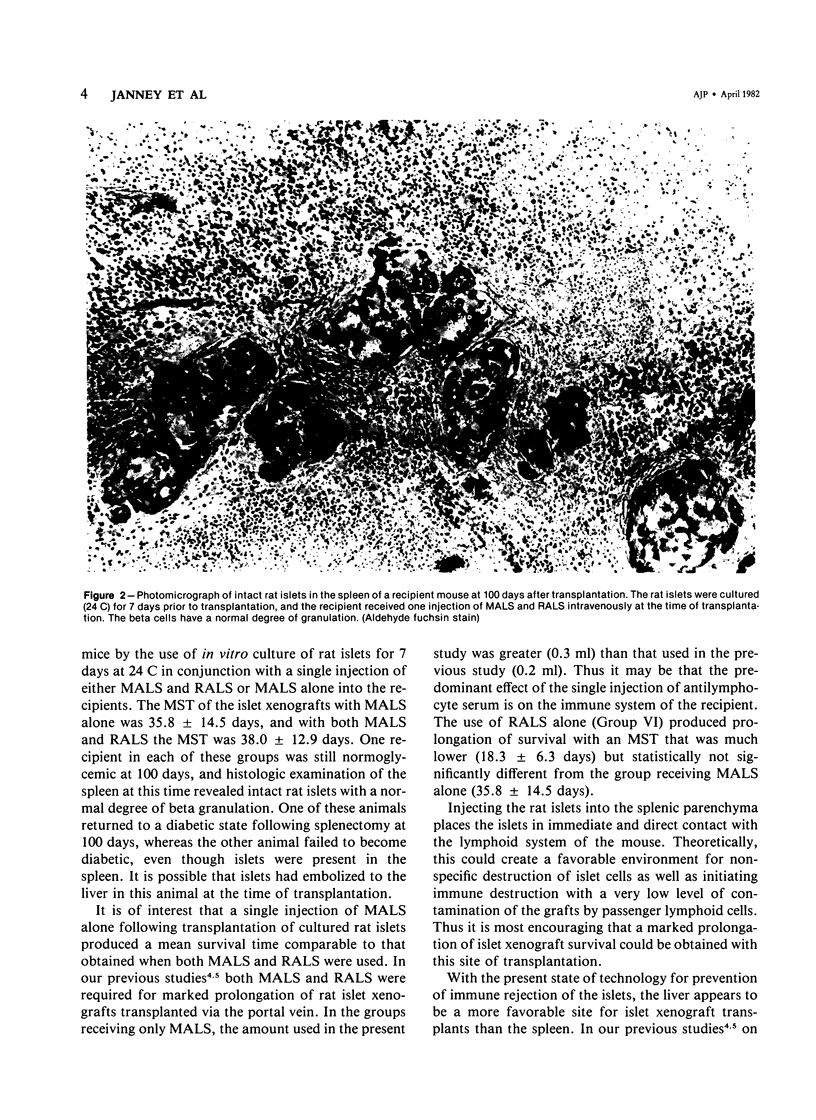
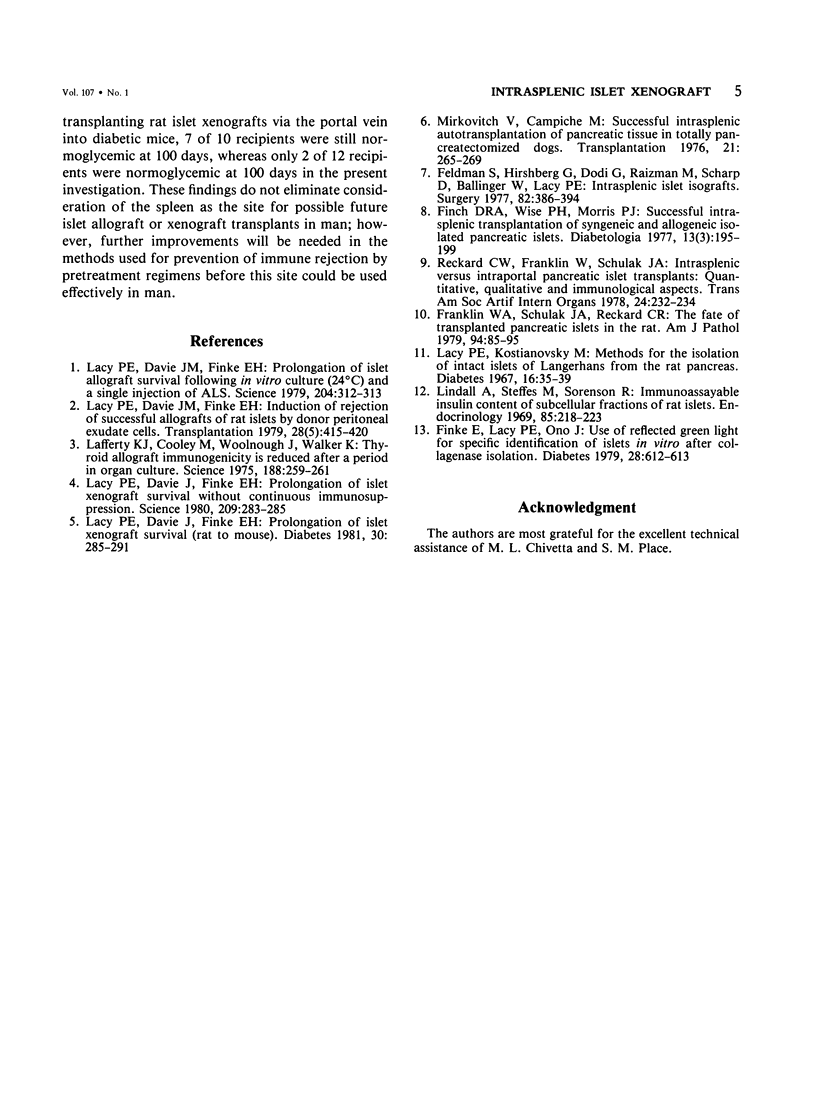
Images in this article
Selected References
These references are in PubMed. This may not be the complete list of references from this article.
- Feldman S. D., Hirshberg G. E., Dodi G., Raizman M. E., Scharp D. W., Ballinger W. F., Lacy P. E. Intrasplenic islet isografts. Surgery. 1977 Sep;82(3):386–394. [PubMed] [Google Scholar]
- Finch D. R., Wise P. H., Morris P. J. Successful intra-splenic transplantation of syngeneic and allogeneic isolated pancreatic islets. Diabetologia. 1977 May;13(3):195–199. doi: 10.1007/BF01219699. [DOI] [PubMed] [Google Scholar]
- Finke E. H., Lacy P. E., Ono J. Use of reflected green light for specific identification of islets in vitro after collagenase isolation. Diabetes. 1979 Jun;28(6):612–613. doi: 10.2337/diab.28.6.612. [DOI] [PubMed] [Google Scholar]
- Franklin W. A., Schulak J. A., Reckard C. R. The fate of transplanted pancreatic islets in the rat. Am J Pathol. 1979 Jan;94(1):85–95. [PMC free article] [PubMed] [Google Scholar]
- Lacy P. E., Davie J. M., Finke E. H. Induction of rejection of successful allografts of rat islets by donor peritoneal exudate cells. Transplantation. 1979 Nov;28(5):415–420. doi: 10.1097/00007890-197911000-00014. [DOI] [PubMed] [Google Scholar]
- Lacy P. E., Davie J. M., Finke E. H. Prolongation of islet allograft survival following in vitro culture (24 degrees C) and a single injection of ALS. Science. 1979 Apr 20;204(4390):312–313. doi: 10.1126/science.107588. [DOI] [PubMed] [Google Scholar]
- Lacy P. E., Davie J. M., Finke E. H. Prolongation of islet xenograft survival (rat to mouse). Diabetes. 1981 Apr;30(4):285–291. doi: 10.2337/diab.30.4.285. [DOI] [PubMed] [Google Scholar]
- Lacy P. E., Davie J. M., Finke E. H. Prolongation of islet xenograft survival without continuous immunosuppression. Science. 1980 Jul 11;209(4453):283–285. doi: 10.1126/science.6770465. [DOI] [PubMed] [Google Scholar]
- Lacy P. E., Kostianovsky M. Method for the isolation of intact islets of Langerhans from the rat pancreas. Diabetes. 1967 Jan;16(1):35–39. doi: 10.2337/diab.16.1.35. [DOI] [PubMed] [Google Scholar]
- Lafferty K. J., Cooley M. A., Woolnough J., Walker K. Z. Thyroid allograft immunogenicity is reduced after a period in organ culture. Science. 1975 Apr 18;188(4185):259–261. doi: 10.1126/science.1118726. [DOI] [PubMed] [Google Scholar]
- Lindall A., Steffes M., Sorenson R. Immunoassayable insulin content of subcellular fractions of rat islets. Endocrinology. 1969 Aug;85(2):218–223. doi: 10.1210/endo-85-2-218. [DOI] [PubMed] [Google Scholar]
- Mirkovitch V., Campiche M. Successful intrasplenic autotransplantation of pancreatic tissue in totally pancreatectomised dogs. Transplantation. 1976 Mar;21(3):265–269. doi: 10.1097/00007890-197603000-00014. [DOI] [PubMed] [Google Scholar]
- Reckard C. R., Franklin W., Schulak J. A. Intrasplenic versus intraportal pancreatic islet transplants: quantitative, qualitative and immunological aspects. Trans Am Soc Artif Intern Organs. 1978;24:232–234. [PubMed] [Google Scholar]



